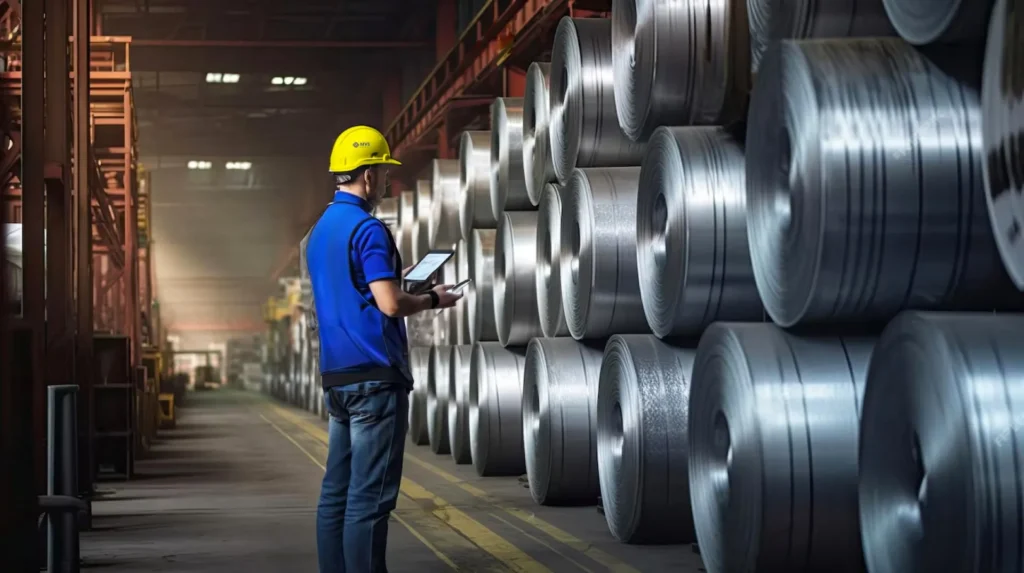Sourcing highquality steel products is essential for ensuring the durability, reliability, and performance of the final output, whether it’s for construction, manufacturing, or other industrial applications. This blog outlines effective strategies to source topnotch steel products, focusing on factors that influence quality, reliable suppliers, and best practices in procurement.
Understanding Steel Grades and Standards
The first step in sourcing highquality steel is understanding the various grades and standards. Steel grades are determined by the chemical composition and mechanical properties required for the application. Familiarize yourself with the following key standards:
ASTM International Standards These standards cover various types of steel products, including carbon, alloy, and stainless steels.
ISO Standards The International Organization for Standardization provides a comprehensive range of standards for different steel types and applications.
EN Standards European standards also offer detailed classifications and specifications for steel products.
Knowing these standards helps in specifying the right type of steel for your needs and ensures consistency in quality.
Evaluating Supplier Reliability
Finding a reliable supplier is crucial. Here are steps to evaluate potential suppliers:
Supplier Reputation and History Research the supplier’s history, market reputation, and customer reviews. Longestablished suppliers are often more reliable.
Quality Certifications Check for certifications like ISO 9001, which indicates adherence to quality management systems.
Sample Testing Request samples and conduct rigorous testing to ensure the steel meets your required standards.
Inspection Reports Reliable suppliers provide detailed inspection reports, including mechanical and chemical analysis.
Building strong relationships with reputable suppliers can also lead to better terms and customized solutions.
Assessing Quality Through Testing
Implementing thorough testing methods is vital to ensure the steel’s quality. Common testing methods include:
Tensile Testing Measures the strength and ductility of the steel.
Hardness Testing Determines the steel’s resistance to deformation.
Impact Testing Assesses the steel’s ability to absorb energy during fracture.
NonDestructive Testing (NDT) Techniques like ultrasonic testing and radiographic testing are used to detect internal flaws without damaging the steel.
Regular quality audits and inspections at different stages of production can help maintain high standards.
Ensuring Compliance with Industry Standards
Adhering to industry standards and regulations is nonnegotiable. It ensures that the steel products are safe, reliable, and suitable for the intended application. Always stay updated with:
National and International Regulations Be aware of both local and global standards that might affect your sourcing decisions.
Environmental Standards Ensure the steel production process complies with environmental regulations to promote sustainability.
Leveraging Technology and Innovation
Incorporating advanced technology can significantly enhance the quality of steel products. Some innovative approaches include:
Automation in Production Automated systems ensure precision and consistency in manufacturing processes.
Advanced Metallurgical Techniques Techniques such as vacuum degassing and thermomechanical processing can improve the steel’s properties.
Digital Tracking Systems Using digital systems for tracking and documenting the production process ensures transparency and traceability.
Investing in technology not only improves quality but also enhances efficiency and reduces costs.
Strategic Sourcing and Procurement Practices
Adopting strategic sourcing and procurement practices ensures a steady supply of highquality steel. Key practices include:
LongTerm Contracts Establish longterm contracts with reliable suppliers to secure consistent quality and better pricing.
Diversification of Suppliers Avoid dependence on a single supplier by diversifying your sources. This reduces risk and increases flexibility.
Collaborative Relationships Foster collaborative relationships with suppliers to achieve mutual benefits and continuous improvement.
Sourcing highquality steel products requires a comprehensive approach that includes understanding steel grades, evaluating suppliers, conducting rigorous testing, ensuring compliance with standards, leveraging technology, and adopting strategic procurement practices. By following these strategies, businesses can secure reliable and highquality steel that meets their specific needs, ensuring the success and durability of their projects.




